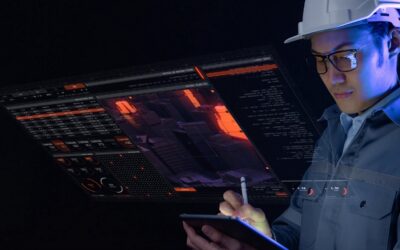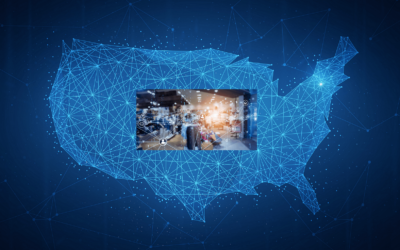When Gartner introduced SASE in 2019 (Secure Access Service Edge), the world had not yet experienced a global pandemic that has been underway for more than two years. However, Gartner did understand at the time of their first publication that remote working was still in its infancy, in part because all the elements required to build, secure, manage and extend a true SASE solution were still in development.
SASE is miles ahead of traditional SD-WAN, given the vision for advanced, multi-purpose edge devices, including hubs which, with Wi-Fi 6, stand to replace standard routers and other hardware that have been around for decades, along with the mobile-first, cloud-native nature of the solution.
Access to faster speeds and affordable, reliable connections have also been challenging to address, but with the evolution of 4G/LTE and 5G and the general availability of faster broadband through fiber-to-the-home, connectivity is getting better every day.
There are myriad other elements associated with a full SASE approach, but the aspects listed above are fundamental and require orchestration – which has been another hurdle to adoption. Even those SASE investments and deployments being rolled out in early 2020 were interrupted when in the first quarter, the crisis exploded and legislation was passed to close non-essential businesses and agencies, and IT leaders had to scramble to get thousands, tens of thousands, and even hundreds of thousands of workers set up at home – where in many cases, their children were being educated remotely causing strains on bandwidth and performance.
“Orchestration and integration are key to being able to move real-time services to the very edge of the enterprise network,” said Indrajit Ghosh, founder and CEO, ConnX, a managed services company based in New Jersey and serving medium and large distributed enterprises across industries including financial services, healthcare, retail, travel and hospitality, and more. “Ultimately for enterprises to excel at remote working, not just from home or anywhere, but from everywhere, they must have confidence that services can be securely accessed by only the authenticated end-users, that enough bandwidth is available to ensure no degradation of those services, and that they have comprehensive visibility into what is happening – not just in their offices, but in all locations.”
Ghosh said while the global pandemic dramatically accelerated the move to “work from everywhere” solutions, the movement was already in place several years ago. “We’ve been supporting remote working for our customers for two decades,” he said, “but when we started with organizations including Merrill Lynch, Morgan Stanley, and other large enterprises with the highest demands for performance and security, the world was less digital then. We’ve been extremely fortunate to work with many of the most visionary and talented CIOs, CISOs, and IT executives so had access to what their real problems were, including fast-moving cyber attacks, the move to cloud computing, the need to support mobile workforces, and the need to simply compete with others who were hiring developers and rolling out digital products and services.”
An early proponent of SASE, Ghosh, explained the adoption of SD-WAN over the last decade was a huge step in the right direction but caused, especially in the early years, greater challenges than some enterprises may have anticipated.
“We’ve implemented and manage dozens of SD-WANs and continue to evolve and improve those we have in place with the monitoring, maintenance, and management platform we invested in early on,” said Robert Sese, Sr. Director, Vision and Strategy at ConnX. “The good news is, in a software-defined world, where nearly every collaboration platform today can be delivered via the cloud and private networks, there is no need to rip and replace what is in place today. The even better news is, with software enhancements which can be easily added to existing network infrastructure, adding more security, more capabilities, more features can be as easy as spinning up a new VM in the cloud.”
Sese said their Maestro platform, which is broad and deep, “is a bridge from the norm because as we conceived and invested in, developed, and tested our orchestration and managed services architecture, we concentrated on the edge. Given all the work we do with our client’s teams, we assembled the intelligence that validated the theory that as organizations become more distributed, as their highest value employees needed to work from everywhere, but with the highest quality and predictability, the edge needed much more than a broadband connection, laptop, and smartphone. We are now in a whole new era of edge communications – and computing – and security – and what we have found is that the only way to make that work elegantly is to solve every problem which requires engineering and integration that we do – then simply license to our customers.”
Ghosh said a real game-changer has been the “upside down” nature of the pricing model. “With very little to no upfront CAPEX, depending on the requirements, and a license model based on seats, or subscribers, it has been very easy to set up a trial and prove our platform and managed services approach works. It’s a sea change for IT teams, but they embrace this because we take a ton of stress off their teams and their budgets. Imagine how much easier it is, for example, to plan a 2022 budget when you don’t have to manage so many moving parts and vendor models.”
When asked about the hardware at the edge, Sese said they are very invested in bringing their customers the best possible multi-edge MEC device, which he said is the “unlock code” for SASE success. “We’ll be making announcements in 2022 as we continue to work with our awesome partner ecosystem, including 100% readiness for Wi-Fi 6 and Enterprise 4G/LTE and 5G. While we can’t share details at this point, we can say that in our search for simplification and sophistication – existing in harmony – is never-ending. If there is a better way to keep organizations connected and productive – we’re going to create it.”
Originally published on SD-WAN Resource.









